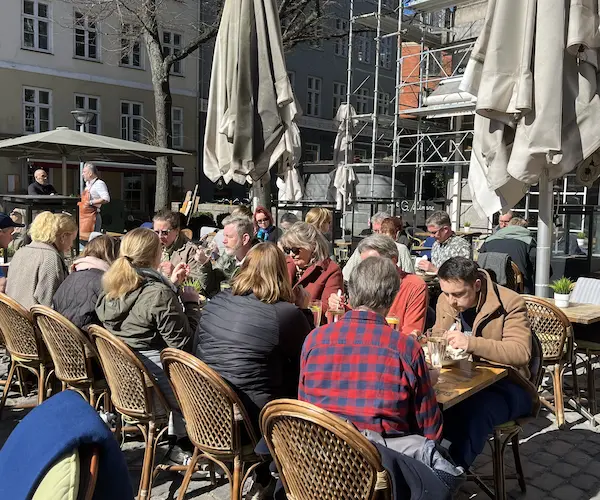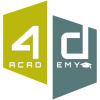Velkommen til vores kurser i Azure, der er relevante for dig, der vil udnytte det fulde potentiale i Cloud og arbejde effektivt i skyen
Azure er en cloud computingtjeneste fra Microsoft til opbygning, testning, implementering og administration af applikationer og tjenester via Microsoft-styrede datacentre. Azure leverer: Software som en service (SaaS), platform som en service (PaaS) og infrastruktur som en service (IaaS). Og Azure understøtter mange forskellige programmeringssprog, værktøjer og rammer - både Microsoft specifikke og fra tredjepart. Når man først har besluttet sig for Azure, så er der rigtig mange fordele i forhold til hvis du anvender et klassisk serverrum. Fx betaler du kun efter forbrug – hverken mere eller mindre. Du slipper for at investere i hardware, der kræver løbende vedligeholdelse og modernisering. Du kan nemt hente de services, du har brug for - og aktivere dem med det samme. Tilsvarende kan du let deaktivere de applikationer du ikke anvender. Du kan nemt skalere op og ned - alt efter dit aktuelle behov. Du opnår den højeste sikkerhed og certificering på datacenter. Derudover får du automatisk understøttelse af GDPR. Azure er i konstant udvikling for at møde alle de tænkelige behov, som din virksomhed måtte have for at kunne fungere effektivt og konkurrencedygtigt – både nu og i fremtiden.
Hos 4D A/S er vi specialister i Azure og kan derfor tilbyde dig relevante kurser, der passer til dit niveau, behov og ambitioner. Vores mål er at sikre dig maksimalt udbytte af dit Azure kursus.
Vores kursuscenter ligger på Strøget i centrum af København. Vi har 13 lyse, funktionelle kursuslokaler med moderne AV-udstyr og fire hyggelige loungeområder, hvor du kan nyde forfriskninger og snacks i pauserne. På vores tre store terrasser kan du få frisk luft og nyde den Københavnske atmosfære.
Find dit kursus her og book din dato allerede i dag.
Alle virksomheder har forskellige arbejdsgange og derfor også krav, behov og ønsker til deres løsninger. I visse tilfælde dækker vores åbne standard Azure kurser kun delvist de specifikke behov.
Derfor tilbyder vi virksomhedskurser/firmakurser i Azure, hvor forløb og indhold aftales individuelt med en instruktør med udgangspunkt i moduler af vores forskellige Azure kurser.
Vi kan også tilbyde Azure Workshops som er virksomhedskursus/firmakursus og konsulentydelse på en og samme tid. Her tager vi udgangspunkt i jeres konkrete behov og laver et kursus, hvor vi arbejder med jeres aktuelle opgaver samtidig med at i får træning i de relevante værktøjer og metoder.
Kontakt os
Vi sidder altid klar til at hjælpe, hvis du har spørgsmål omkring kursusindhold eller hvis du har brug for hjælp til at bestille et kursus eller en konsulent.
Hvad siger vores kunder om os?
Hvad kan du forvente hos 4D Academy?
- Gratis rådgivning og hotline i op til 1 år efter kurset
- Vi sætter kvaliteten i højsædet, derfor får du tilfredshedsgaranti
- Certificerede instruktører og gennemarbejdede materialer
- Praksisnær undervisning med virkelighedsnære opgaver
- Moderne kursusfaciliteter midt på Strøget i København
- Frokost på lokal restaurant og lækker forplejning hele dagen
- Friskbrygget kaffe, te, vand, sodavand, frugt og sødt
Cloud blog posts
Vi har skrevet om Microsoft Cloud på vores blog. Se det her: Cloud på 4D Bloggen
Azure blog
Vi har skrevet om Azure på vores blog. Se det her: Azure på 4D Bloggen

Hvorfor skal du vælge 4D Academy til dit kursus?
Hos 4D Academy får du undervisning, der kombinerer teori, praksis og metode – altid med fokus på, hvordan du kan bruge det direkte i dit arbejde. Vores undervisere er specialister med mange års erfaring og har en stærk forståelse for de udfordringer, du møder i hverdagen. Derfor er undervisningen altid relevant, konkret og opdateret med den nyeste viden.
Skal du til København, foregår undervisningen i vores moderne lokaler centralt i byen (Læderstræde), nemt tilgængeligt med offentlig transport. Vi tilbyder gratis hotline‑support efter kurset, og med vores tilfredshedsgaranti er du sikret fuld værdi for pengene.
Hos 4D Academy mener vi, at et kursus skal være mere end bare læring – det skal være en oplevelse. Derfor sørger vi for drikkevarer, kaffe, te, frugt og snacks i løbet af dagen. Til frokost tager vi på en nærliggende restaurant ved Gråbrødre torv, hvor du kan vælge mellem flere velsmagende retter.








